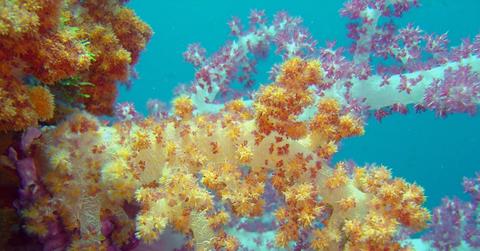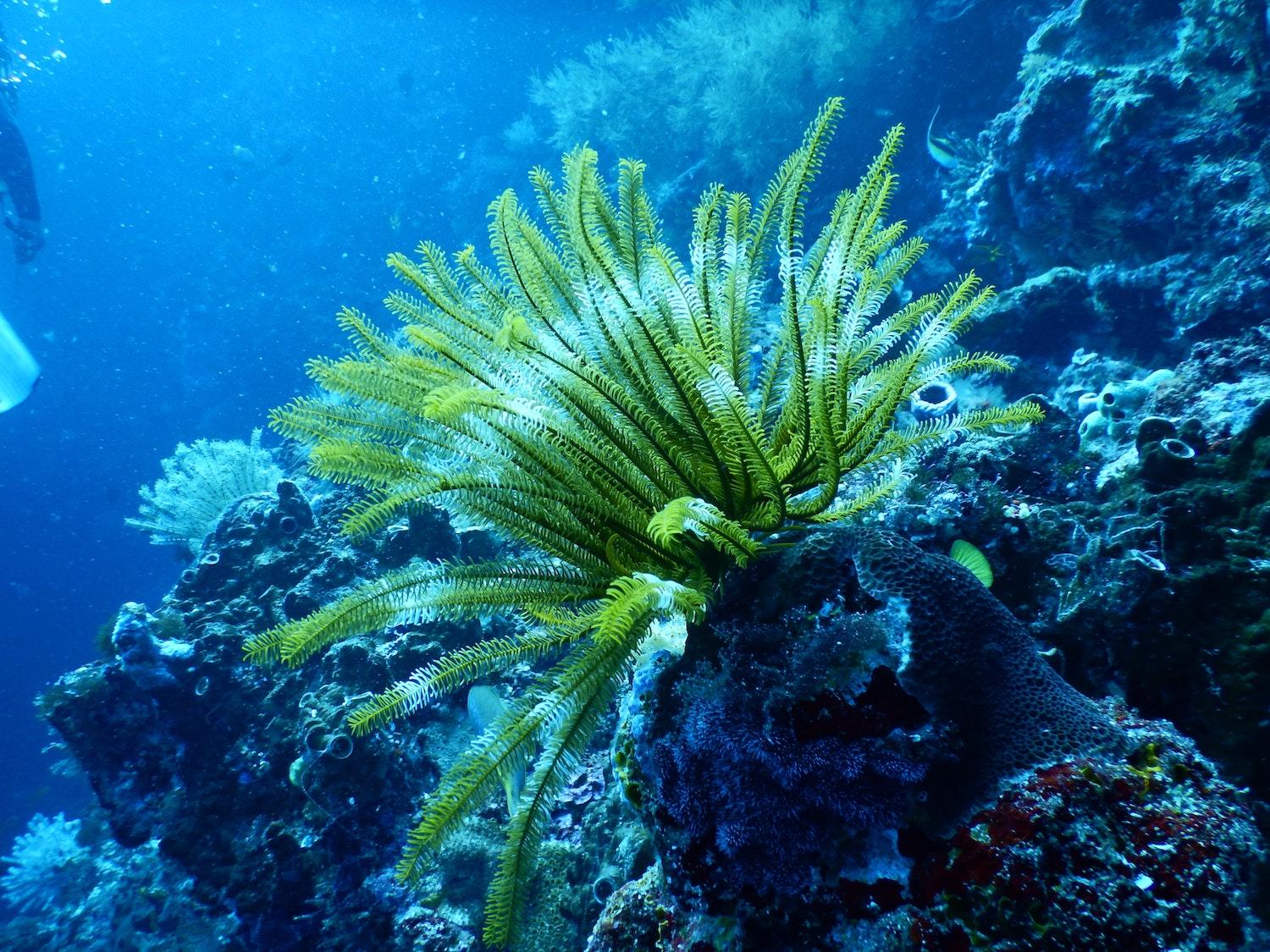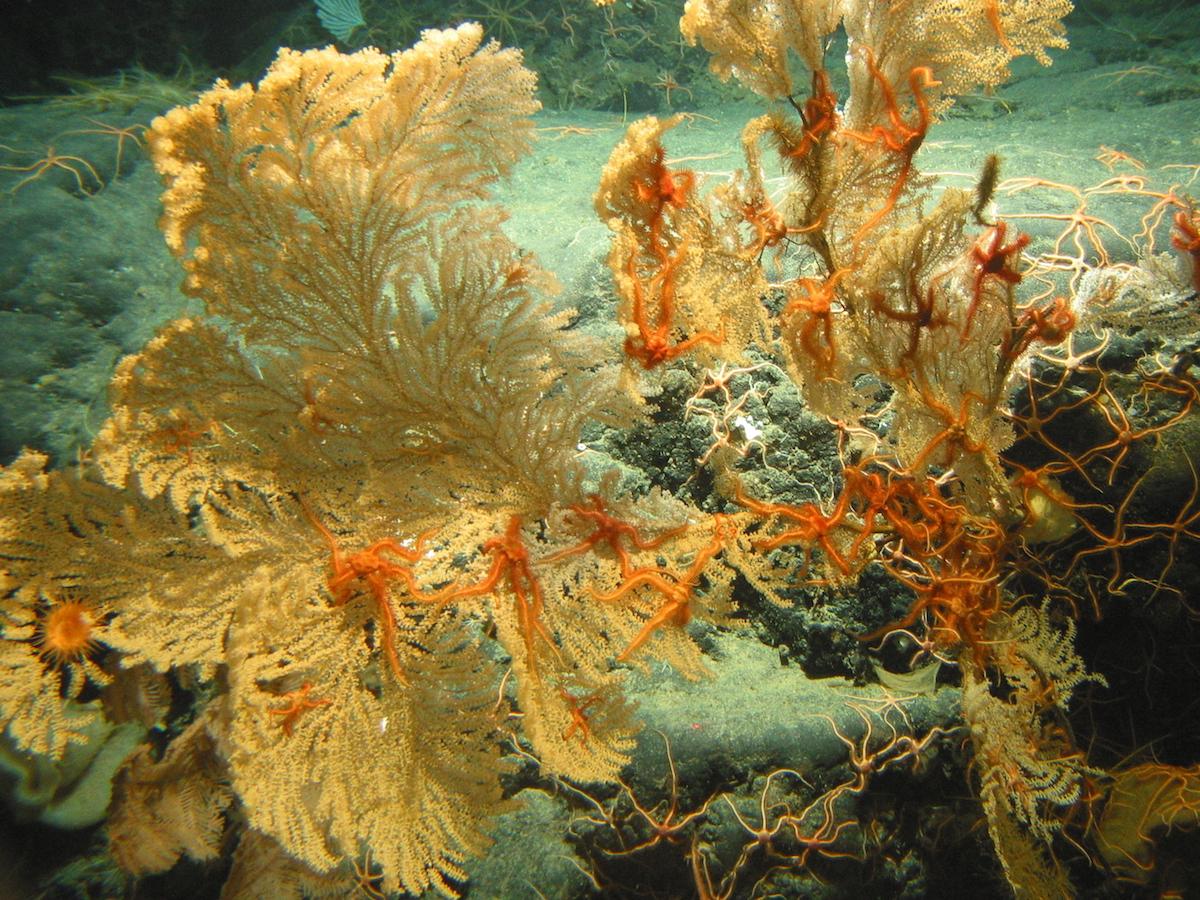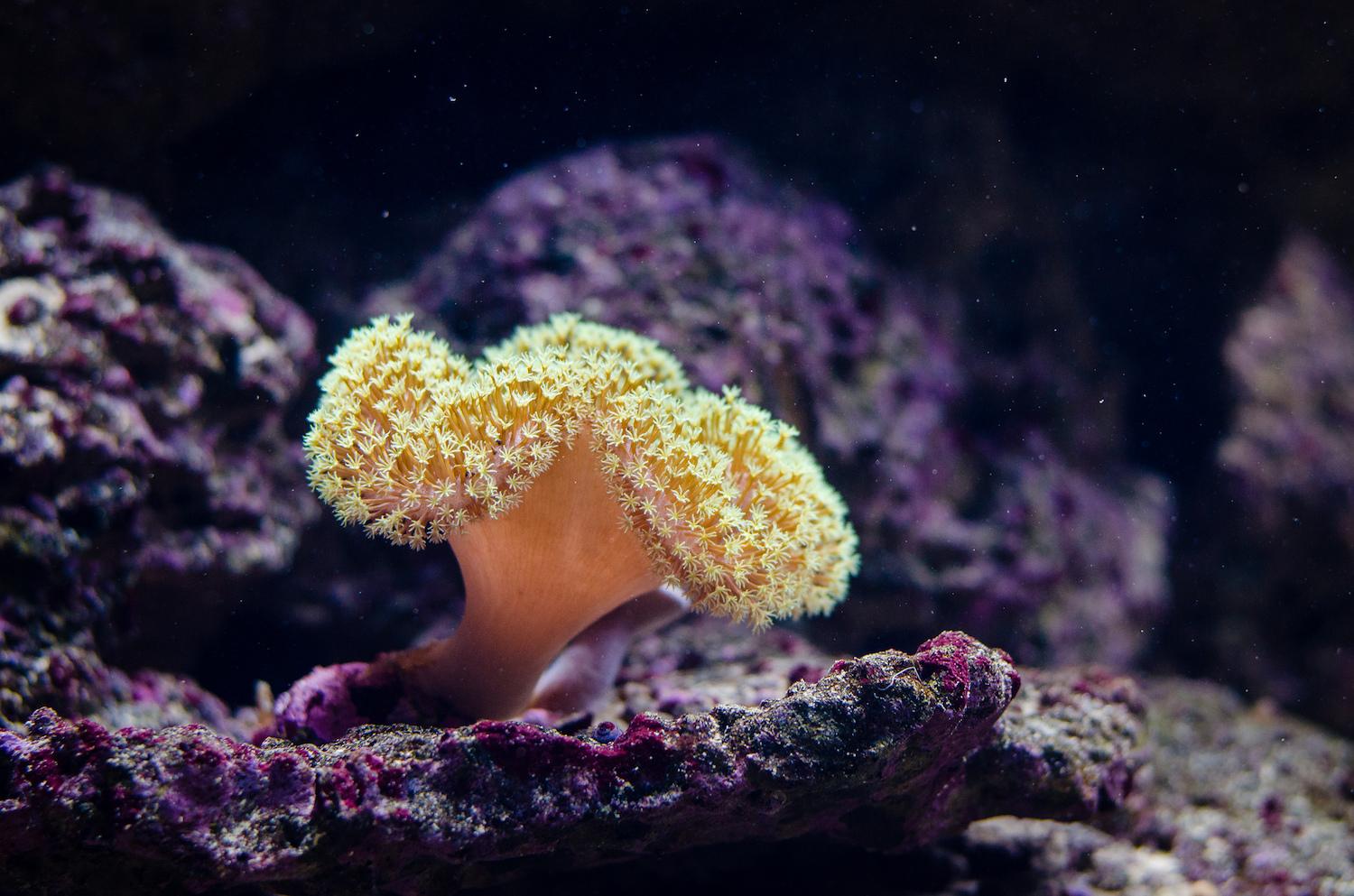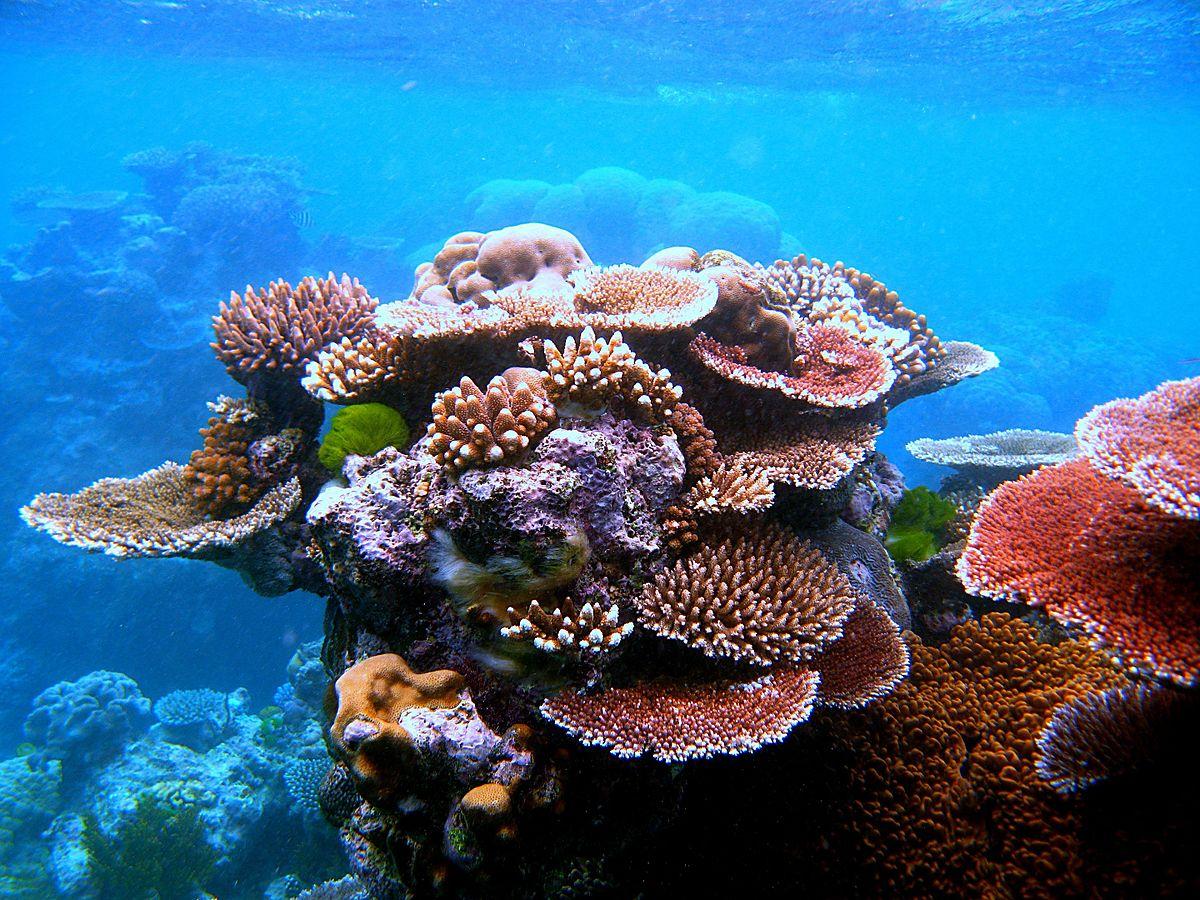These Marine Scientists Are Finding Innovative Ways To Save The Coral Reefs
Could gene editing and "microfragmenting" help grow robust new reefs?
Updated May 31 2019, 11:08 a.m. ET
The news on coral reefs is far from rosy. Mass bleaching over the past two years has led to widespread death — according to one especially scary study, half of all the coral in the Great Barrier Reef has died since 2016.
Rising sea temperatures are the culprit, and that cannot be solved with a simple switch. But a few dedicated scientists have come up with inventive ways to beat back the tide of decaying and dying reefs. Could these methods yield real results? We’ll let the researchers explain in their own words.
Breaking Reefs Into Tiny Pieces
Smashing something to bits doesn’t seem like a great way to preserve it, but that’s essentially what microfragmenting is. Scientist David Vaughan has championed this technique since 2011 and the way he tells it, his discovery was something akin to Alexander Fleming’s famous penicillin breakthrough: a complete accident. “By mistake I broke a coral in the laboratory,” he explains. “I thought all the tiny fragments were going to die, but they grew super fast. So I started cutting them with a scalpel. We now use [this method] to produce thousands of corals.”
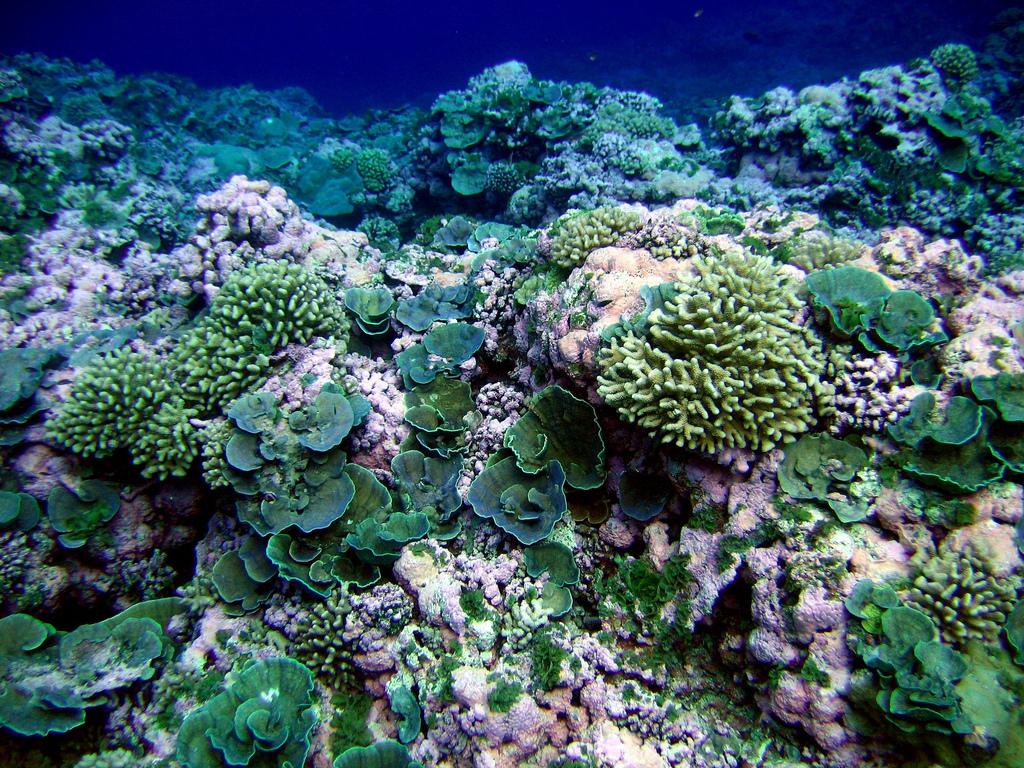
Vaughan says that microfragmenting has allowed his team at Mote Marine Laboratory to plant 36,000 new reefs, and that he plans to bump that number up to 70,000 by next year. These are astonishing numbers, considering how slowly coral reefs normally grow. Vaughan’s fragments have a growth rate 25-50 times higher than reefs in the wild, which can take up to a century to develop substantial size. “In the past, if we had waited for coral to grow, we’d be planting for our great-grandchildren,” Vaughan says. “These will grow in my lifetime, and I’m an old guy.”
Vaughan cautions that microfragmenting is not a permanent band-aid for dying reefs. “I like to tell people that we still need to fix the big problem of climate change,” he says. But this practice has enormous potential. It isn’t just a way to add new reefs in mass quantities — it’s a way to research the healthiest species so that hopefully, as Vaughan puts it, we can identify reefs that can thrive “50 or 100 years from now.”
Isolating “Recovery Reefs”
Finding healthy reef species is also core to Peter J. Mumby’s research. The University of Queensland professor made headlines last year when he published a study on “recovery reefs,” or 112 individual reefs that could help the ecosystem heal itself. Mumby and his team evaluated reefs along three factors: coral larvae, risk of coral bleaching, and pest populations.
Abundant larvae was important was obvious reasons — you can’t have recovery without reproduction. As for environmental risk, the researchers used satellite records of sea temperature to find reefs that had not yet experienced scorching sea temperatures, the kind which trigger mass bleaching. Pests meant crown-of-thorns starfish, which gobble up reefs.
Reefs that scored high in larvae but low in pests, and lived in ideal climates were labeled “recovery reefs.” They make up just 3% of the Great Barrier Reef, but, according to Mumby, their larvae can reach up to 47% of all reefs in a single spawning season.
“Finding these [112] reefs is a little like revealing the cardiovascular system of the Great Barrier Reef,” he says in a press release. And with proper check-ups and treatment, this thumping heart might just keep ticking.
Editing Reef Genes
Could the key to reef recovery lie in its very DNA? One team of biologists and geneticists thinks so. In a study published earlier this year, Stanford postdoc Phillip Cleves and his colleagues suggested the CRISPR-Cas9 gene editing tool could be used to study and modify coral reef genes.
“I want this paper to provide an early blueprint of the types of genetic manipulations that scientists can start doing with corals,” Cleves says in a statement. “If we can start classifying what genes are important, then we can get an idea of what we can do to help conservation, or even just predict what’s going to happen in the future.”
Cleves and his team aren’t looking to engineer an invincible coral reef, capable of withstanding rising sea temperatures and super storms. That plan would be fraught with ethical questions and isn’t all that feasible anyway. But he hopes CRISPR can help “inform conservation efforts” and shed new light on reef biology that could lead to future eureka moments — accidental or not.
